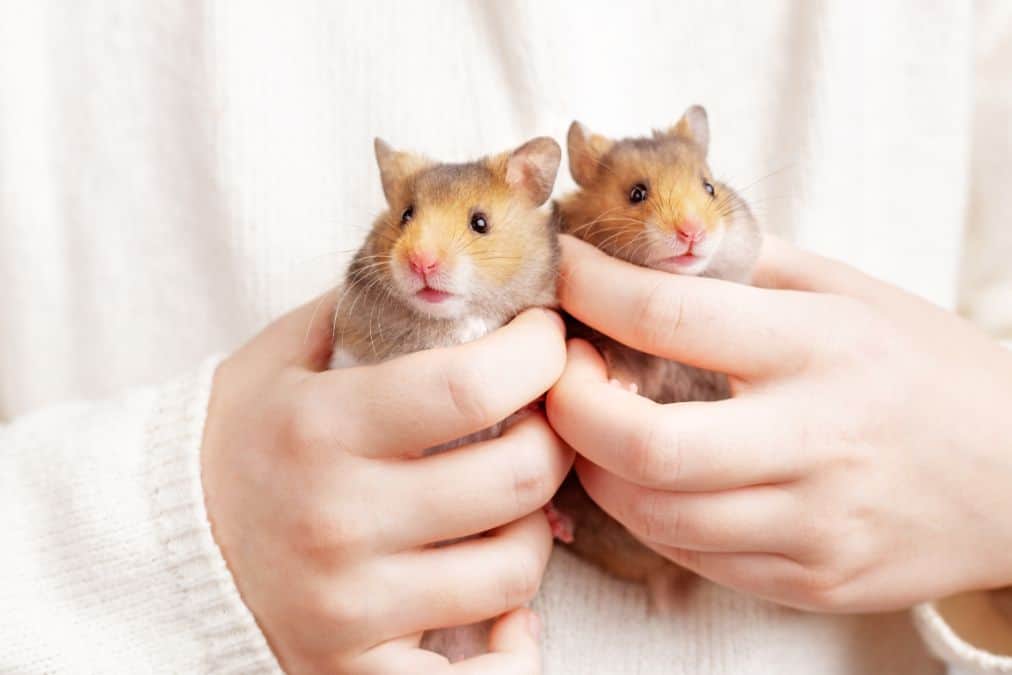Hamsters are one of the cutest and most popular pets that many people love to keep. They are small, adorable, and furry creatures that are perfect for those who live in small spaces or for those who want to have a low maintenance pet.
However, if you are planning to get a hamster, one of the most important decisions you have to make is whether to get a male or a female hamster. In this ultimate guide, we will discuss how to tell the difference between male and female hamsters, which one is best as a pet, the differences between them, and how to care for them.

Telling the Difference Between Male and Female Hamsters
It’s important to be able to tell the difference between male and female hamsters so that you know what you’re dealing with. Here are some ways to differentiate between male and female hamsters:
Physical Characteristics
One of the easiest ways to identify the sex of a hamster is by looking at its genitalia. Male hamsters have a prominent pair of testicles located near their anus, while female hamsters have a genital opening located near their anus. This is most noticeable when the hamster is around 4-6 weeks old.
Another difference is that male hamsters have a longer and thicker body compared to female hamsters. Females have a shorter and rounder body. Additionally, male hamsters have a broader and squarer head while female hamsters have a more delicate and narrow head.
Behavioral Differences
Male and female hamsters also have different behaviors. Male hamsters are known to be more territorial and aggressive towards other hamsters of the same sex.
They are also more active and playful compared to females. On the other hand, female hamsters are more docile and sociable, making them ideal for families with children.
Which Hamster is Best as a Pet?
When it comes to choosing between male and female hamsters, it’s important to consider the pros and cons of each.
Pros and Cons of Male Hamsters
Male hamsters are more active and playful, making them great for those who want a pet that’s always on the move.
They are also more independent, which means they require less attention from their owners. However, male hamsters are more territorial and may fight with other males if they are housed together. Additionally, male hamsters have a stronger odor, which can be a problem for some people.
Pros and Cons of Female Hamsters
Female hamsters are more docile and sociable, making them great for families with children. They are also less likely to fight with other hamsters, making them easier to house together. However, female hamsters may become aggressive during their breeding season, which can be a problem for some owners. Additionally, female hamsters may develop health problems related to their reproductive system, such as uterine tumors.
Differences Between Male and Female Hamsters
Apart from physical and behavioral differences, male and female hamsters also differ in other aspects.
Size and Weight
Male hamsters are generally larger and heavier than female hamsters. For example, a male Syrian hamster can grow up to 7 inches long, while a female Syrian hamster can only grow up to 5 inches long. Additionally, male hamsters can weigh up to 6 ounces, while female hamsters can only weigh up to 4 ounces.
Temperament and Personality
As discussed earlier, male and female hamsters have different temperaments and personalities. Male hamsters are more active and playful, while female hamsters are more docile and sociable.
Reproductive System and Health
Female hamsters have a reproductive system that requires special care. They may develop health problems related to their reproductive system, such as uterine tumors or cysts. Additionally, female hamsters may have a shorter lifespan compared to males, especially if they develop reproductive health problems.
How to Care for Male and Female Hamsters
Whether you choose a male or female hamster, caring for them properly is essential for their health and well-being.
Diet and Nutrition
Hamsters require a balanced diet that consists of fresh fruits, vegetables, and high-quality hamster food. Make sure to provide them with fresh water daily and avoid feeding them sugary or fatty foods.
Exercise and Playtime
Hamsters need exercise and playtime to keep them healthy and happy. Provide them with a large cage that’s equipped with toys, tunnels, and a running wheel. Additionally, let them out of their cage for supervised playtime every day.
Health and Safety Precautions
Hamsters are susceptible to health problems, such as respiratory infections and dental problems. Provide them with regular veterinary care and keep their cage clean and hygienic to prevent the spread of disease. Additionally, make sure to provide them with a safe and secure environment to prevent them from escaping or injuring themselves.
Conclusion
Choosing between a male and female hamster is a personal decision that depends on your lifestyle, preferences, and needs.
By understanding the differences between male and female hamsters, you can make an informed decision and provide them with the care they need to live a healthy and happy life.
Remember to provide them with a balanced diet, plenty of exercise and playtime, and regular veterinary care to ensure their well-being.
- How Long Do American Eskimo Dogs Live? Important Factors and Care Tips - September 29, 2023
- Do American Bulldogs Need Grooming? Essential Tips and Care Guidelines - September 29, 2023
- Do Bengal Cats Enjoy Playing? Essential Tips for Keeping Them Active - September 29, 2023